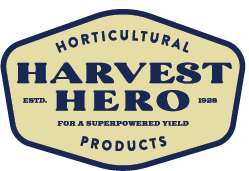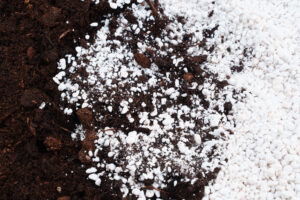How to Grow Vegetables in Raised Beds and Containers

How do you plan on growing your plants this season? In the ground, raised garden beds, or containers? If you’re thinking about a raised garden bed or container, you’re in luck! There are many benefits to choosing these locations for growing. It’s easier to grow vegetables in raised beds and containers than in the ground because you have more control of the soil environment. You and your plants will enjoy fewer weeds, no ground-dwelling pests, less risk of animals nibbling your plants, and fewer issues with water-logging. Plus, this method is easier on your body as it requires less bending over time than you’d spend tending to your ground garden. Learn how you can grow an abundance of vegetables no matter where you live in raised beds and containers.
Tips to Grow Abundant Vegetables in Raised Beds and Containers
Get Weeds and Other Plants out of the Environment First
To achieve the benefits of a weed-free growing environment, you first need to kill any weeds, grass, and other plant materials before adding soil to your raised bed. There are a few effective methods:
- A non-selective herbicide. This is used to kill broadleaf and grass weeds and works within two weeks. Remove all plant material including roots from the area before adding soil.
- Remove sunlight. You can also kill the weeds by removing their access to sunlight. You can place black plastic, cardboard, or other light-preventing material over the weeds and grass. This will take at least a month to be effective. Once the plants die, remove all plant matter including roots.
- Weed-eater. You can use a weed-eater to remove roots of grasses and weeds. First, remove the green portions, and then dig at least 3″ into the ground. Use a rake to help remove leftover plant matter.
Choose Your Raised Bed or Container Size
Raised beds and containers come in all shapes and sizes. You will either buy a pre-constructed raised bed, or you can make your own. When determining the right size, you need to consider:
- Appropriate depth. Raised beds should be at least 8″ deep to ensure roots have plenty of room to grow.
- Width. You’ll want to make sure you can comfortably reach the plants in the middle without harming the plants on the edges.
- Material. Some wood is not considered safe for vegetable gardens. You will want to choose treated wood manufactured after 2003. Cedar, Black Cherry, Oak or Redwood are all good choices for untreated wood because of its resistancy to rotting. You may also use bricks, pavers, stones, and cinderblocks.
- Liners. If using wood, placing a liner on the bottom of your raised bed helps preserve the wood and assists with drainage. Metal mesh, fabric, or hardware cloth are good liners Avoid plastic because it prevents proper drainage.
- Ensure Adequate Drainage. You may want to consider adding drainage holes at the bottom of the container to prevent root rot.
Use the Right Soil or Soilless Media Mix
When you grow in a raised bed or container, you have two main options: use a soil media or a soilless media. Both have their own pros and cons:
- Soil Media. A soil media includes naturally occurring soils and other additives. This method is an easily accessible and inexpensive way to grow organically. Unfortunately, if the soil is not treated, your plants and soil are at risk of being exposed to weeds, pest infestations, disease, mold, and fungus.
- Soilless Media. A soilless media doesn’t contain soil. Instead, it’s a combination of organic and inorganic materials of your choosing. With this method, there is a lower threat of organisms when you use inorganic media like perlite, vermiculite, or diatomaceous earth. You can have full control over your soilless mix, using the components and fertilizer you’d like.
Give Your Vegetables the Nutrients They Need with Harvest Hero
All plants need three essential macronutrients to survive, and you will need to supplement the nutrients found naturally in your soil or soilless media to ensure your plants have what they need.
- Potassium (K): This nutrient supports overall plant growth, activating dozens of important enzymes for protein synthesis, sugar transport, N and C metabolism, and photosynthesis. It is especially beneficial for flower response.
- Phosphorus (P): While this nutrient is essential for the general health of plants, it’s especially vital for healthy roots, the basis of your seedling’s success. It is a key component of ATP (Adenosine Triphosphate), the energy unit of plants.
- Nitrogen: Nitrogen gives plants the energy needed to grow and is the primary source of plant protoplasm. It helps plants synthesize amino acids, chlorophyll, nucleic acids, proteins, and enzymes.
Harvest Hero Enhanced Perlite Mix is a nutrient-rich soilless amendment and growing medium that is a 3-in-1 blend comprised of perlite, diatomaceous earth, and essential nutrients. The diatomaceous earth provides a silica source that increases cell wall thickness which imparts a more structural sound plant. It also creates resilience against abiotic stressors such as wind loading, heavy rainfall events, and lodging.
Enhanced Perlite Mix helps your plants get the nutrition they need to improve soil conditions, especially during critical vegetative growth weeks. It will increase the plant’s structural integrity, increase stem diameter, creating an almost impenetrable barrier. Using diatomaceous earth in your soil mix is an excellent choice for wherever you grow, whether you choose a raised bed or container. Grow further with Harvest Hero! Try the Enhanced Perlite Mix today and get FREE SHIPPING on all orders of $40 or more.



